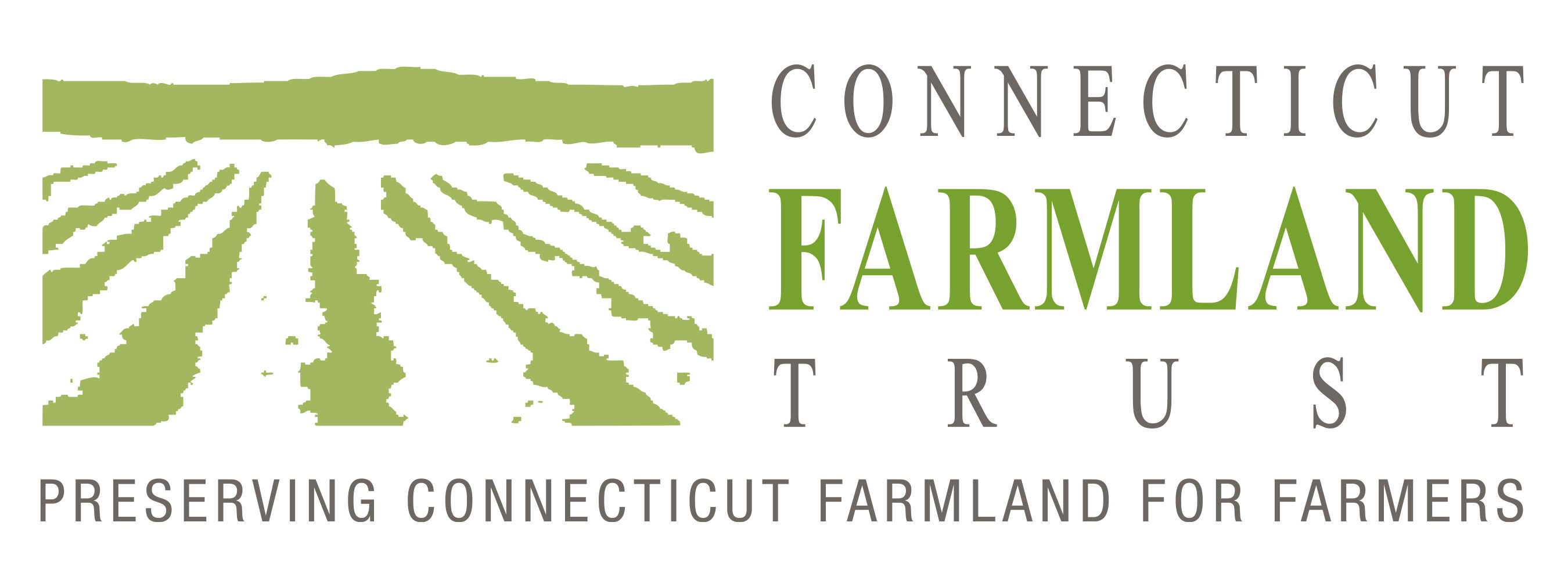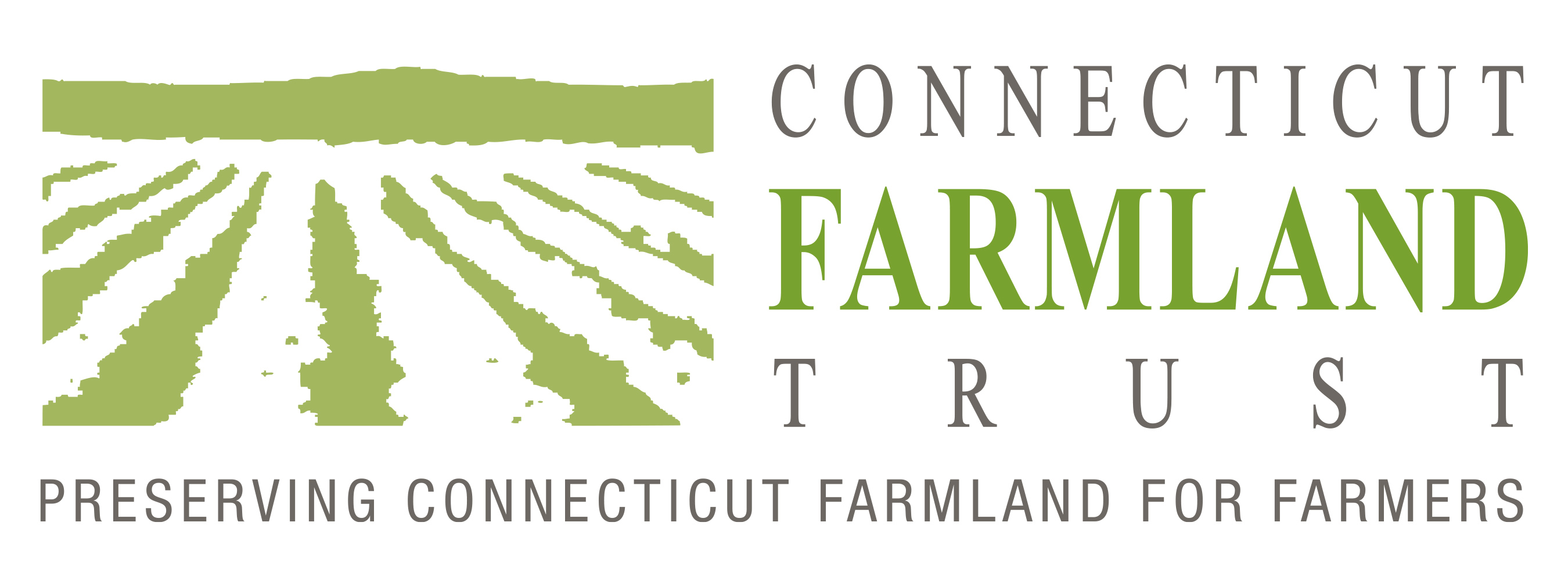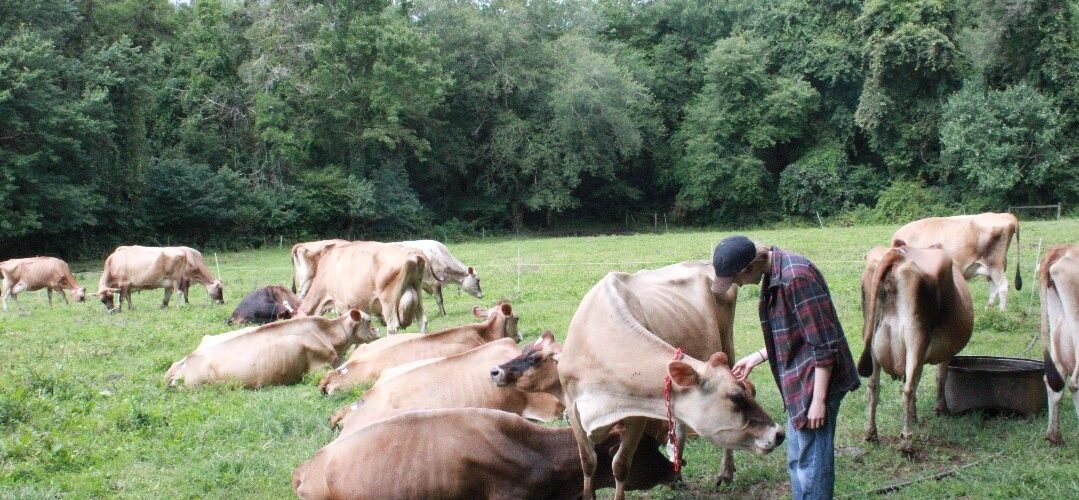From Soil to Cheese: The Stewardship Behind Cato Corner Farm’s Flavors
By Layla Ennis and Cat Wang
Soil health may not be the first thing that comes to mind when thinking about climate change, but its significance is unmistakable. The healthier the soil, the more nature can capture carbon from the atmosphere. Healthier soils offer increased resilience to sudden flooding events like southeastern CT experienced in August.
Fortunately, healthier soils lead both to environmental health and economic prosperity too!
When Catherine Wang, Connecticut Farmland Trust’s Conservation and Stewardship Coordinator, spoke with Liz MacAlister, the owner of Cato Corner Farm, her granddaughter Charlotte Gillman-Boggs, and farm manager David Hevner, she discovered the farm’s strong commitment to soil stewardship—a commitment the farmers believe directly influences the health of their herd and the quality of their cheeses.
Liz MacAllister bought the Cato Corner Farm property in 1979, though the land has been farmed since 1720. Remarkably, the soil has remained untouched by pesticides or chemicals since Liz’s acquisition, if not before. “We’re not certified [organic], but we’ve never used chemicals, and I don’t believe they were used before we came either.” Liz explained. She is adamant that no chemicals will be used to maintain the grass and control weeds in the pastures where her herds graze.
Initially, Liz focused on raising sheep and goats, but in 1997, she expanded the farm’s infrastructure to include cheese production. Today, the farm has 70 cows, with 43 producing milk. In the summer, the herd grazes in the pasture, coming in only for milking every eight hours. Rotational grazing is key to their operation.
Liz described to us how the process works: “We have all the fields divided into paddocks, and the milkers are put into those paddocks for one half of the day, so they move twice a day. After every milking, they’re put into new grass. That’s very beneficial for them and also very beneficial for the grass because it doesn’t get eaten down too much.”
The rotational process is flexible to accommodate changes in weather and season. “We are able to manipulate the size of the fields by opening up the fences,” David added. In the dairy barn, a comprehensive grazing schedule chart helps streamline the process of moving the herd between milkings and adjusting paddocks.
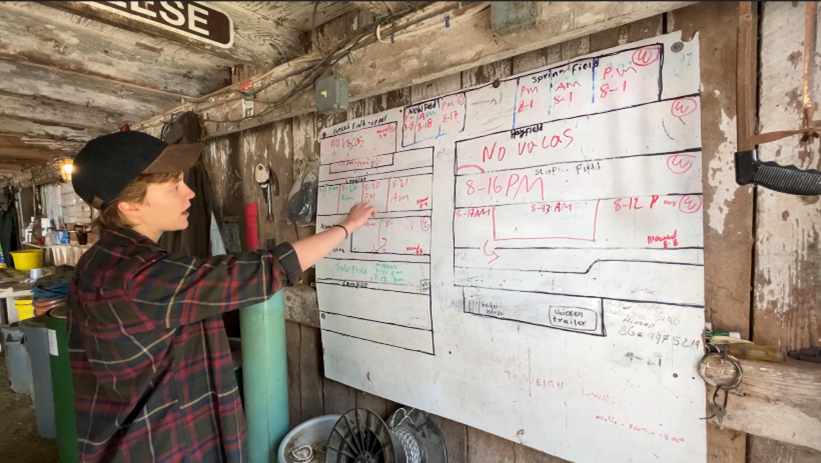
Cato Corner’s rotational grazing began in the 1980s when Liz first learned about the practice during pasture walks in Vermont and through reading materials from New Zealand ‘gurus.’ “There’s a lot of information out there… We aren’t the only people,” Liz emphasized, highlighting how information sharing has supported the farm’s practices.
Farm manager David brought 20 years of experience in commercial dairy farming to Cato Corner. “I can compare what the animals are like on a conventional dairy farm to what [Cato Corner’s] animals are like. Our animals here, I will argue with anybody, have a much better life not being on concrete,” David stated.
The herd not only rotationally grazes all summer but also avoids contact with concrete during the winter. Cato Corner received funding from the Natural Resources Conservation Service (NRCS) to install a hoop house where the cows stay in winter on a composted bedded pack. Instead of removing manure, the farm adds more bedding and tills the surface so the material composts. When the cows return to the fields in spring, the compost remains under the hoop house, protected from the elements, until fall, when it’s spread back onto the fields.
“That means that all our manure stays on the farm and it’s what we use for fertilizer,” Liz explained.
Charlotte added, “And then that re-enriches the soil because the soil here is really sandy, and so if you add the manure back to it, it just makes everything a lot better, and it adds moisture and minerals.”
Liz agreed, “When a lot of inorganic matter like hay and shavings go back into the soil they improve the soil quality. It doesn’t get worn out.”
David also noted that the composted bed method benefits the herd’s health. “Cows have cloven hooves that are not designed to be on concrete,” he explained, adding, “Our cows get the advantage of walking on soft surfaces, of going outside and walking outside in the sun and all night long, and being more like real cows.”
The well-being of the cows is a crucial factor in the success of Cato Corner’s operation. Not only are these personal values within the staff, but on a small farm like theirs, the health of the cows is essential as it would only take a single cow’s bad milk to contaminate an entire tank of milk. The experience of meeting the herd, seeing them relax amongst one another, and being approached by multiple cows who wanted to be pet and lick visitors was definitely a testament to how these cows were raised.
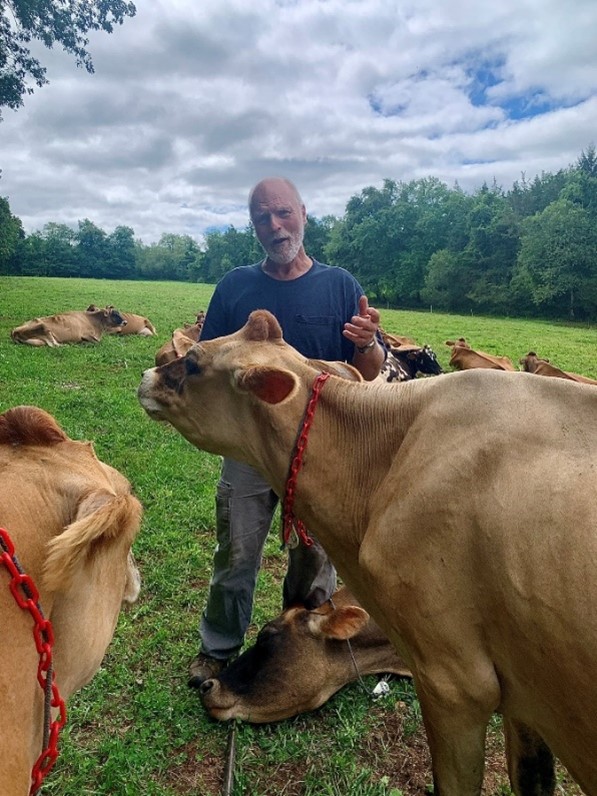
While Cato Corner has practiced soil health techniques since its inception, Liz emphasized the impact of climate change on farming.
“I think people just need to be aware of the difference climate change is going to make. It’s going to change the kinds of grasses that can grow in the northeast, it’s going to change rain patterns and heat patterns, and it will change almost everything eventually,” Liz emphasized.
There’s concern that cows contribute to climate change due to the methane they belch as ruminant animals. Liz learned that a Vermont farm was feeding their cows kelp, which modifies the cows’ system so that they release less methane. It wasn’t long after learning this that she readily took on the practice at the farm.
The changing climate has also affected grass growth on the farm. This year, with support from a small American Farmland Trust grant, Cato Corner reseeded 8 acres of pastures with grasses more resilient to heat. Previously, the farm primarily grew cool-weather grasses that struggled in the summer heat. This change aims to ensure that Cato Corner can adapt to the climate and continue rotational grazing even in hotter summers.
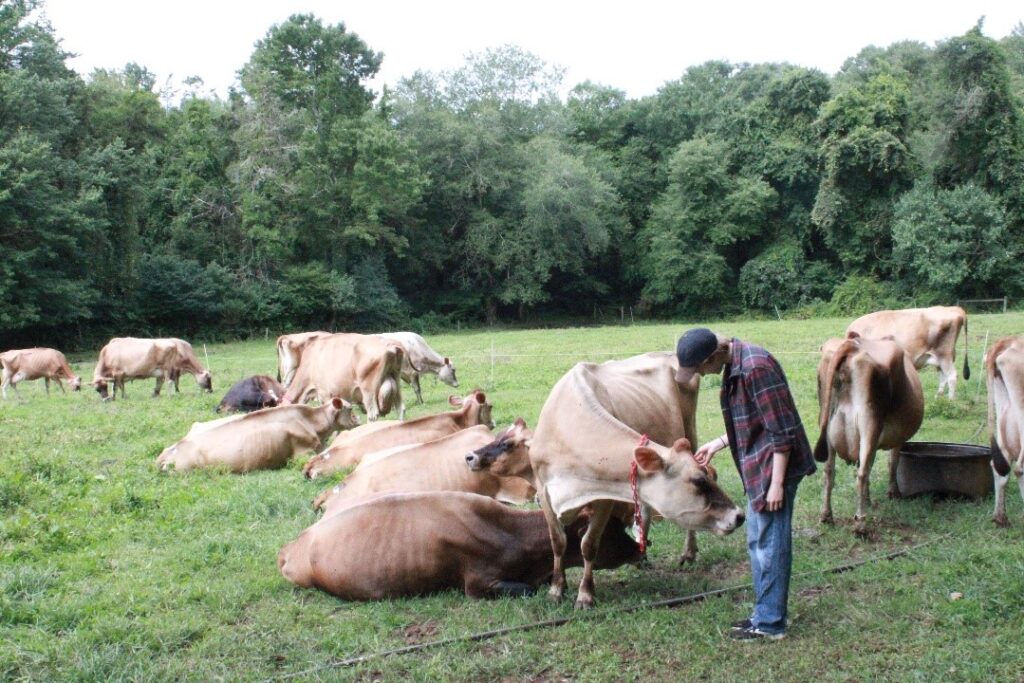
Though Cato Corner is a small farm with a relatively minimal impact on the climate, it was important to Liz that they did their part in mitigating their own impact on climate change when possible. Charlotte also commented that there is an added beauty when making these changes; Not only do these practices improve conditions on the ground for both the soil and the cows, but it also enables them to partake in a movement to help the broader world fight against climate change.
With the soil being the source of vitality on the farm, it has become clear that the health of the soil and the cows is closely intertwined at every stage. Charlotte emphasized the unique connection between the land and their cheese, saying, “Because the cows are eating from all of our land, the milk that they produce then has components from all the different pastures that then becomes the cheese that sort of represents the farm in that sense.” The flavors of the cheese can vary slightly depending on the pasture where the cows graze. Charlotte shared a story about when the herd grazed on a neighboring farm’s empty pasture, which resulted in the cheese having a hint of onion—thanks to the green onions growing in that field.
“Your cheese will taste like all of your land,” Charlotte reflected, “which is a really beautiful thing, I think.”
Thank you to Cato Corner Farm for this interview! If you’d like to try their cheese, visit their website at catocornerfarm.com to see their hours of operation and which farmer’s market they sell at.
Want to learn more about soil health? Try the following:
Soil health basics and benefits: https://www.farmers.gov/conservation/soil-health#soil-practice
shttps://farmlandinfo.org/publications/nrcs-soil-health-fact-sheets/
USDA service centers and conservation programs: https://www.nrcs.usda.gov/getting-assistance/get-started-with-nrcs
https://offices.sc.egov.usda.gov/locator/apphttps://www.nrcs.usda.gov/programs-initiatives
Conservation Districts resources: https://www.nacdnet.org/general-resources/conservation-district-directory/
https://www.nacdnet.org/about-nacd/what-we-do/soil/
Soil Health Institute resources: https://soilhealthinstitute.org/our-work/initiatives/economics-of-soil-health-systems/
